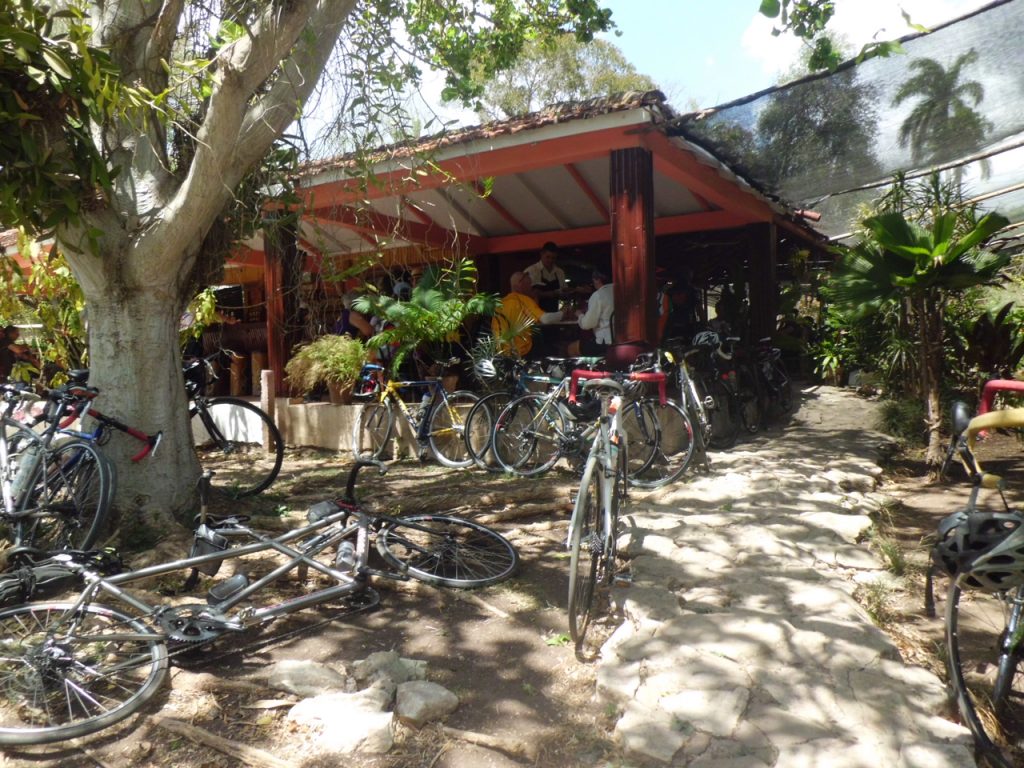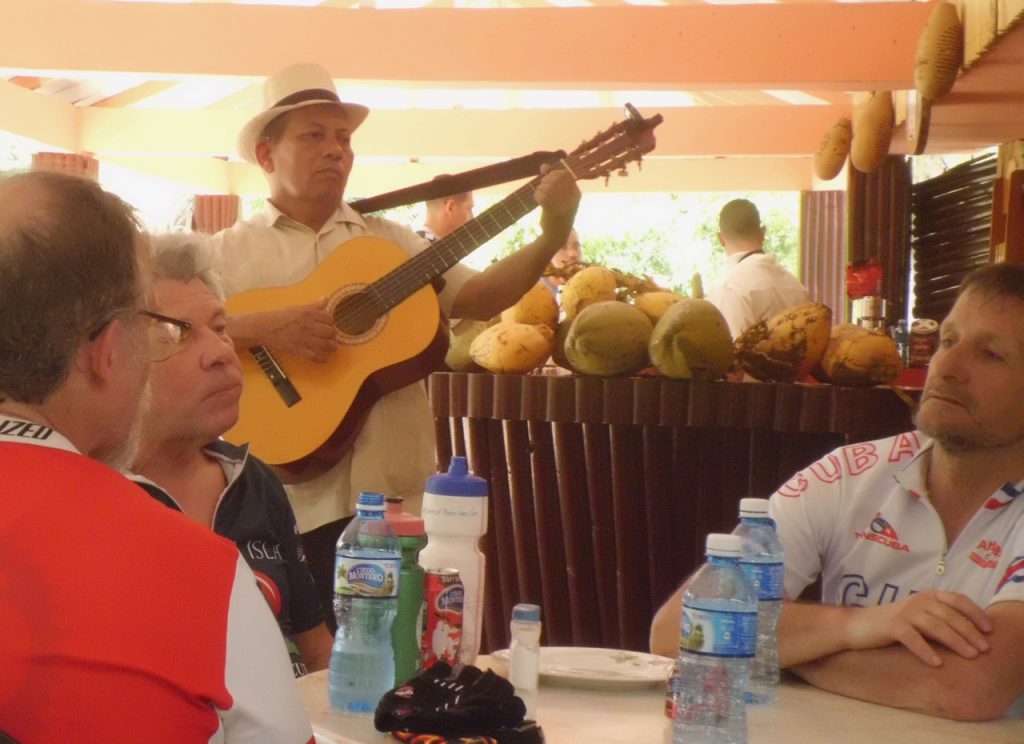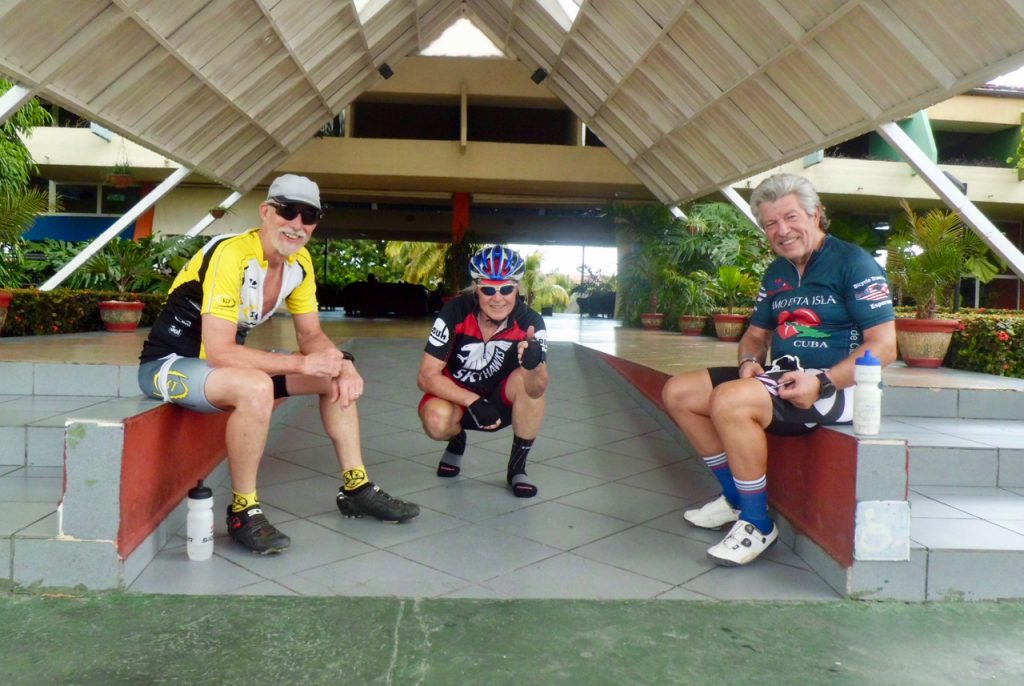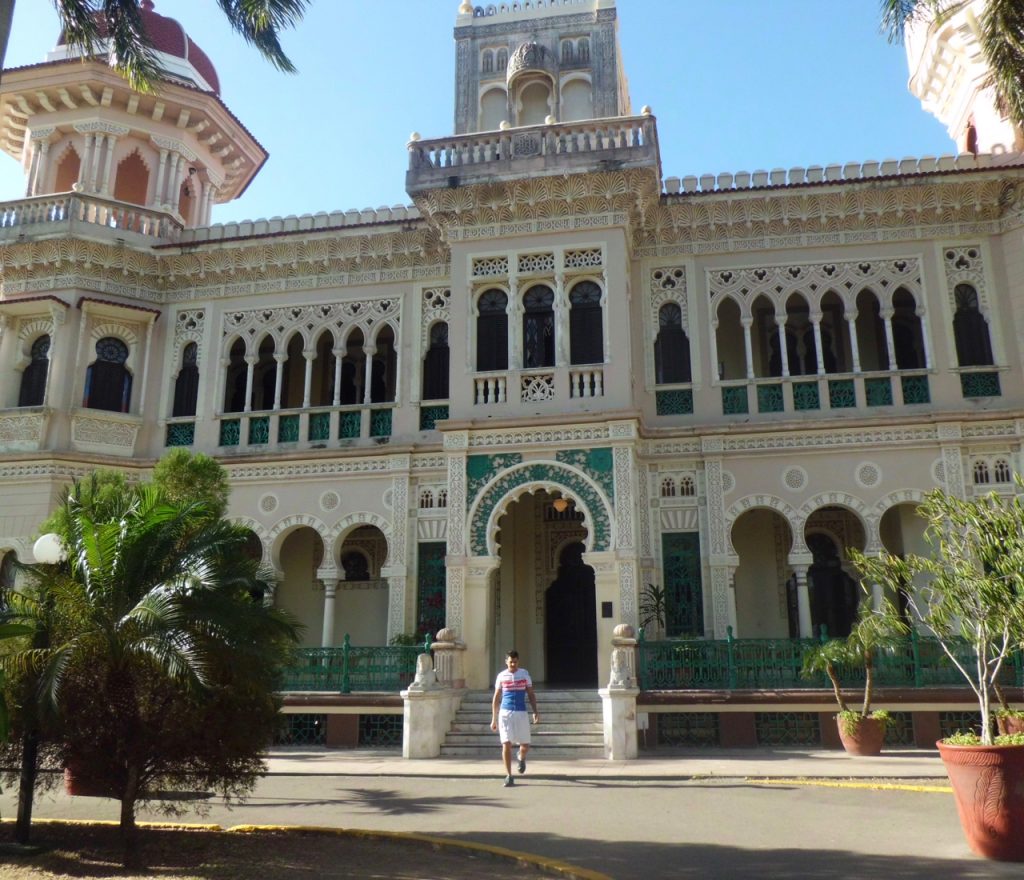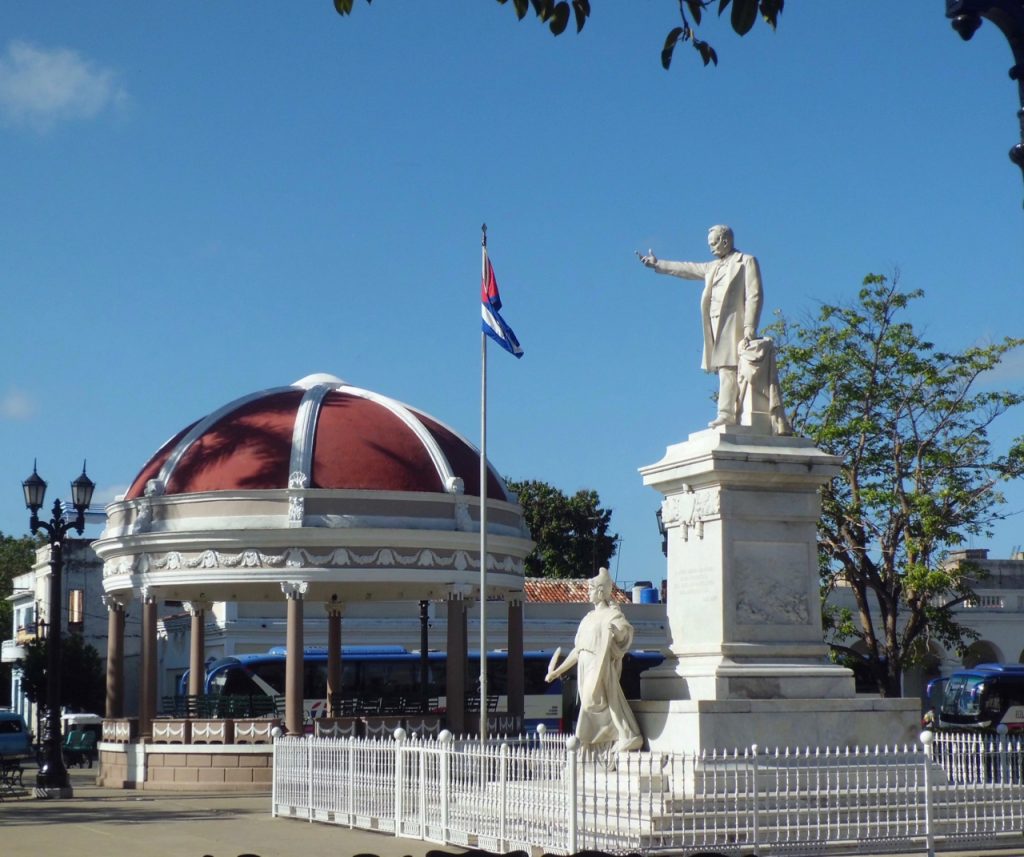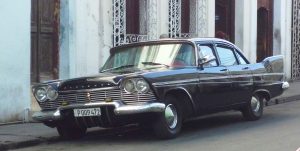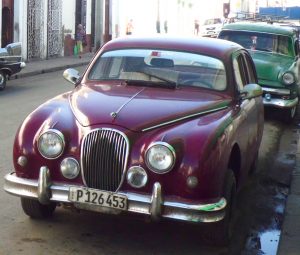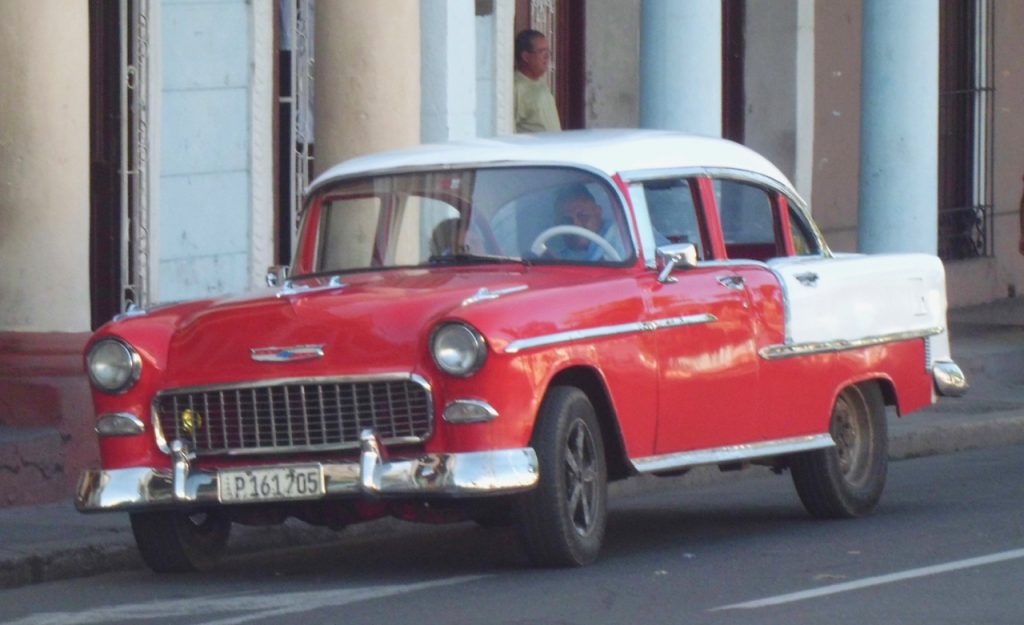Tacoma, Washington; Etzatlan, Mexico; Cambridge, Massachusetts; Kingston, Ontario; Bahia Blanca, Argentina; Saint-Nazaire, France; Contagem, Brazil. What could they possibly have in common? All are “Sister Cities” of Cienfuegos, Cuba. Which means our visit there was high on the must-see list, seeing as how we’ve spent half our lives just across the Narrows from Tacoma, and have attended the local conclave honoring that relationship several times. We’d heard a lot about the local baseball team, as one of our friends has played with the Tacoma side in the annual exhibition matches. So when our tour bus rolled by the local baseball stadium – every town of any size in Cuba has a local baseball stadium – I rushed to the window, just in time to capture the proud mascot – a trumpeting elephant?
After our beach stay the previous night, we drove up and through Trinidad, to a load-out on the outskirts of town. After an hour cruising along the Caribbean shore in sultry morning breezes (all at our back, of course) we turned inland over some low hills, heading for Our Mandatory Cultural Stop, the Jardin Botanica at Pepito Tey.
The hills and rising heat had taken some of the friskiness out of our crew, who were ready not for a tour of local flora, but a few rounds of Bucaneros. Our bikes ended up strewn haphazardly across the entrance to a little open air café attached to the Jardin, where a lone guitarist tried to raise our spirits.
From there, of course, we slithered back down hill towards the Sea, across some lonely flats, heading for the hotel at Rancho Playa Luna, which turned out to be another Soviet block two story monstrosity.
I had pacelined in with two others and Yoany, and we enjoyed a languid wait for the bus, our day clothes, and remaining ride companions.
Next morning we headed back into Cienfuegos, where Alejandro tried manfully to direct our attention to the sumptuous Spanish Colonial architecture everywhere on display. We dutifully took a few pictures, but at the final stop, he found himself all alone when no one followed him into some forgettable edifice hard by the bay.
Juan turned the bus around, and we ended the Tour at Plaza Jose Marti (like baseball stadia, there’s one in every town.) Jose, the “George Washington of Cuba”, stares into the middle distance from his pedestal.
On our short walking tour out from the Plaza, Aly again attempted to relate the history of the town and its importance in Cuban history, but all I had eyes for were these three cars: a Purple Jaguar, and black ’59 Plymouth with archetypal fins, and (in my mind), the piece de resistance, a 1955 red and white Chevrolet.
Back in the early ‘70s, when cars from the ‘50s were still quite common in the US, I moved from the Northeast to Southern California. There, a subset of the local Hispanic culture venerated this particular model, modifying it to iconic status. With lights in the wheel wheels, little fuzzy balls dangling from the inside of the windshield, hydraulically controlled rear shocks with raised and lowered the rear end (giving the “low-rider” effect), the “Pipty-Pibe Chebby” was every young Chicano’s dream car.
Above the carefully maintained and gloriously painted vehicles surrounding the Plaza, Che rose beatifically above it all.


